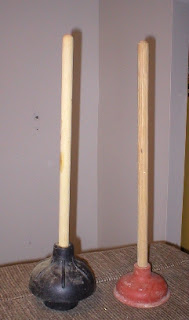Heating & Radiators – A Brief History
Monty
Python’s hilarious and controversial 1979 film The Life of Brian contains any number of seminal scenes, being as
it is one of the greatest comedy films ever made. Set in the Judea of the Roman
Empire around the time of Jesus’s crucifixion, the film, as the name suggests,
charts the life of Brian, who has the bad luck to be confused with a messiah –
the Romans were not big on dissent, as you probably know…
Anyhow,
the scene shows a meeting of misfiring rebels who, traducing the Romans, demand
‘what have they ever done for us?’ What follows is a long list of societal benefits,
including sanitation, medicine, education, wine, public order, irrigation,
roads, the fresh water system and public health. One thing they missed there,
however, is central heating. The fools…
Yes,
those ingenious Romans pioneered what we would now call central heating. This
didn’t require radiators, as a hypocaust system would heat the air via a
furnace and circulate it under floors to provide warmth. This setup was
replicated sporadically over the coming centuries across Europe but
unfortunately the dark ages followed, where people were far too preoccupied
with charming medieval things like gout and pestilence to consider artful
heating solutions.
In
what is perhaps a grand expression of logic, the first water-based heating
systems have been traced to Russia, a place where the sun would freeze if it
came too close to the gelid ground.Home of the Nobel, Sweden, had the first
functioning water-based heating system, whilethe Swedish engineer Triewald
brought this idea over the North Sea to heat a greenhouse in Newcastle. In
turn, steam heating systems were first installed in homes in the 1830s.
What
we would know view as the absolute essential of a central heating system, the
radiator, came into being at some time in the 1850s. From a number of rudimentary
designs put forward the so-called ‘Bundy Loop’ of 1872, the brainchild of
Nelson H Bundy, remains the most influential to this day.
In
part due to the Industrial Revolution reaching its zenith, the Victorian period
saw the radiator becoming an essential functional feature. Models in those days
were made of cast iron, which rendered them heavy but heat-retentive. As
central heating became more widespread as the 20th century moved on,
cast iron gave way in many areas to steel, although units were still considered
functional, and hence daubed in drab paint or hidden away.
The
real change in radiator design is apparent now, with vertical and horizontal
models boasting a number of differently-shaped panels; yes, radiators are now a
cool item (in the sense of
fashionable, not cold – that wouldn’t do for a radiator really). The array of
finishes on offer, from black glosses to chrome, mean they stand alone as a
design statement, and resist being boxed away. Advances in materials
technology, particularly with regard to low carbon steel, mean radiators last practically
forever, providing wonderful corrosion resistance and strength.
The
final leap has been into the realm of electric radiators. While admittedly these have
yet to gain universal acceptance, they have added another dimension to the home
central heating system. This is because the addition of electric elements in
standard radiators has produced the dual fuel rail. The advantage here is that
you can activate radiators in isolation - for summertime towel drying for
instance - without having to waste energy in firing up the entire system.
So
there you have it, heating from the Romans to us. Fair
enough, theirs was a civilisation to admire but also one to flinch from – after
all, it led to Russell Crowe in a leather skirt.


Comments
Post a Comment